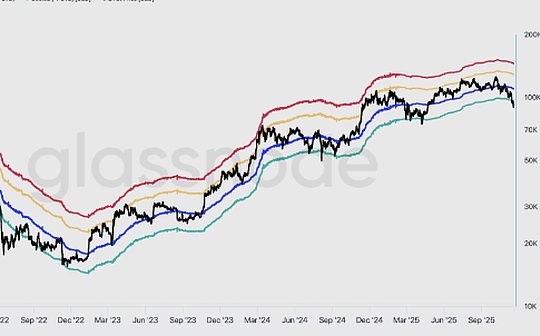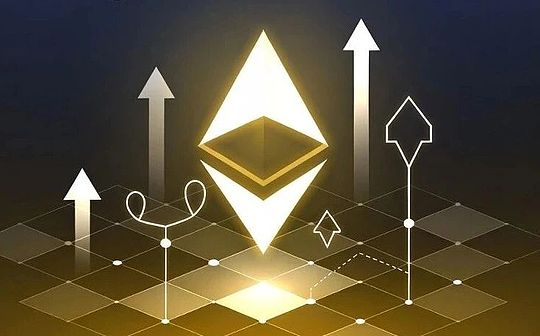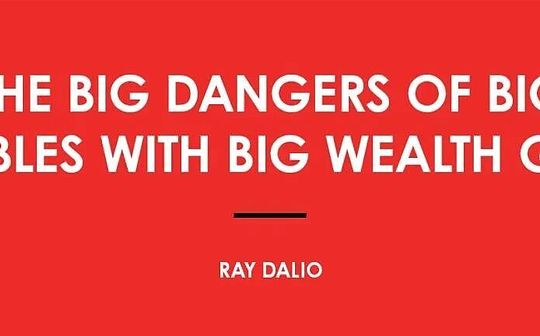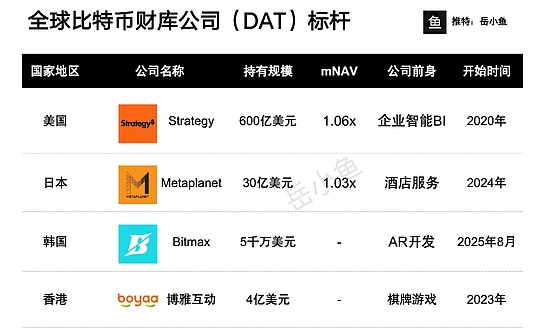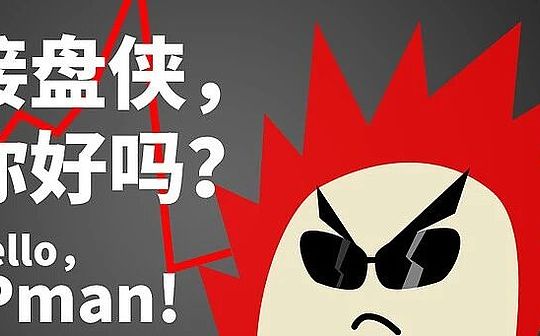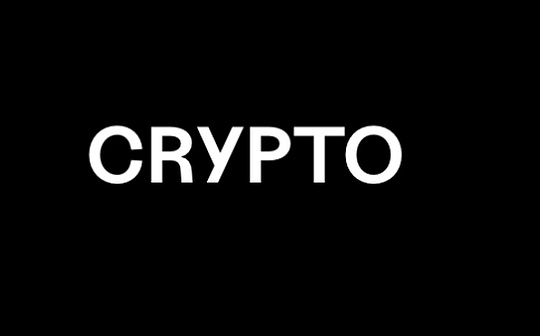
Author: a16z crypto partner; compiled: 0xjs@bitchain vision
a16z recently released a possible solution to technology builders in the next year“Big Ideas” comprehensive list, These big ideas come from partners in AI, American Vitality, Bio/Health, Crypto, Enterprise, FinTech, Gaming, Infrastructure and other fields.
Here are some crypto Big Ideas that have excitement for a16z crypto partners about 2025.
AI needs to have its own wallet to take an intelligent action
As AIs transition from NPC (non-player characters) to protagonists, they will begin to act as agents.Until recently, however, AI has not been able to truly act as an agent.They still cannot participate in the market in a verifiable autonomous (i.e., uncontrolled by humans) way—exchange value, reveal preferences, coordinate resources.
As we have seen, AI agents (such as @truth_terminal) can use encryption to trade, which opens up various creative content opportunities.But AI agents have greater potential to become more useful—both fulfilling human intentions and becoming independent network participants.As AI agent networks begin to keep their own crypto wallets, signature keys and crypto assets, we will see interesting new use cases emerging.These use cases include AI operations or validating nodes in DePIN (decentralized physical infrastructure network)—for example, helping with distributed energy.Other use cases include AI agents becoming truly high-value gamers.We may even end up seeing the first blockchain owned and operated by AI.
—Carra Wu @carrawu on Twitter | @carra on Farcaster
“Decentralized independent chatbot”
In addition to AI that owns a wallet, there is also an AI chatbot running TEE (trusted execution environment).TEE provides an isolated environment that can execute applications, allowing for a more secure distributed system design.But in this case, TEE is used to prove that the robot is autonomous and not controlled by human operators.
Further, the next Big Idea is what we call a decentralized autonomous chatbot or DAC (not to be confused with a decentralized autonomous company).Such chatbots can attract fans by posting attractive content, whether it is entertainment or informational content.It will attract fans on decentralized social media; earn revenue from audiences in various ways; and manage its assets in cryptocurrency.The relevant keys will be managed in TEE running the chatbot software — which means no one can access these keys except the software.
As the risks expand, supervision of guardrails may be essential.But the key point here is decentralization: the chatbot runs on a set of permissionless nodes and is coordinated by consensus protocols, and may even become the first truly autonomous billion dollar entity.
—Dan Boneh, Karma, Daejun Park and Daren Matsuoka
@danboneh on Twitter
@0xkarmacoma on Twitter | @karma on Farcaster
@daejunpark on Twitter
@darenmatsuoka on Twitter | @darenmatsuoka on Farcaster
As more and more people use AI, we need unique personality proofs
In a world full of online impostors, scams, multiple identities, deep forgery and other realistic but deceptive AI-generated content, we need “proof of personality”—something that can help us know we are interacting with real people.However, the new problem here is not fake content; the new problem is that it is now possible to produce these content at a much lower cost.AI fundamentally reduces the marginal cost of producing content that contains all the clues we use to judge whether something is “real”.
So now we need some way to connect content to people in a private way.”Proof of personality” is an important part of building digital identity.But here, it becomes a mechanism to increase the marginal cost of attacking individuals or undermining network integrity: Getting a unique ID is free for humans, but it is expensive and difficult for AI.
This is why the attribute of privacy protection’s “uniqueness” is the next important philosophy in building a network we can trust.It not only solves the problem of personality proof, but also fundamentally changes the cost structure of attacks for malicious actors.Therefore, “uniqueness”—or Sybil resistance—is an unnegotiable attribute of any personality proof system.
—Eddy Lazzarin
@eddylazzarin on Twitter | @eddy on Farcaster
From forecasting the market… to better aggregate everything
With the arrival of the 2024 U.S. election, the forecast market will take the mainstream stage, but as an economist studying market design, I don’t think the forecast market itself will bring about change in 2025.Instead, the forecasting market lays the foundation for more distributed technology-based information aggregation mechanisms—mechanisms that can be used in applications ranging from community governance and sensor networks to finance.
The past year has proven this concept, but be aware that forecasting markets themselves are not always a good way to aggregate information: they may not be reliable even for global “macro” events; for more “micro” problems, predictThe fund pool may be too small to get meaningful signals.But researchers and technicians have decades of design frameworks that inspire people to share (truely) what they know in different information environments—from data pricing and purchasing mechanisms to the use of eliciting subjective assessments.Bayesian truth serum”—many of which have been applied to crypto projects.
Blockchains have always been a natural choice for implementing such mechanisms—not only because they are decentralized, but also because they help to enable open, auditable incentives.Importantly, blockchain also outputs publicly, so everyone can interpret the results in real time.
—Scott Duke Kominers
@skominers on Farcaster | on Twitter
Businesses will increasingly accept stablecoin payments
Stablecoins have found a product market fit over the past year – it’s no surprise, as they are the cheapest way to send money, enabling fast global payments.Stablecoins also provide an easier-to-access platform for entrepreneurs building new payment products: no gatekeeper, minimum balance, or proprietary SDK.But large businesses have not yet realized that switching to these payment channels can save a lot of money — and new profits.
While we’re seeing some businesses interested in stablecoins (and early adoption in peer-to-peer payments), I expect a bigger wave of experimentation in 2025.Small and medium-sized businesses with strong brands, loyal audiences and painfully paying costs (such as restaurants, coffee shops, corner shops) will be the first to move from credit cards to stablecoins.They can’t benefit from credit card fraud protection (considering face-to-face transactions), and transaction fees hurt them the most (30 cents per cup of coffee is a big loss of profit!).
We should also expect large enterprises to adopt stablecoins as well.If stablecoins do accelerate banking, businesses will try to cancel intermediary services from payment providers – directly increasing their profits by 2%.Businesses will also begin seeking new solutions to problems currently addressed by credit card companies, such as fraud protection and identity identification.
—Sam Broner
@sambroner on Farcaster | on Twitter
Countries explore national debts on the chain
Putting government bonds on the chain will create a government-backed, interest-based digital asset – without worrying about monitoring CBDC (Central Bank Digital Currency).These products can unlock new sources of demand for collateral use in DeFi (Decentralized Finance) lending and derivatives agreements, further enhancing the integrity and robustness of these ecosystems.
Therefore, as innovation-enabled governments around the world further explore the advantages and efficiency of public, license-free and tamper-free blockchains this year, some countries may pilot on-chain government bonds.For example, the UK has explored digital securities through the sandbox of its financial regulator, the FCA (Financial Conduct Authority); the UK Treasury also expressed interest in issuing digital gifts.
In the United States — given that the U.S. SEC will request the liquidation of Treasury bonds next year through legacy, cumbersome and expensive infrastructure — more discussions on how blockchain can improve transparency, efficiency and engagement in bond transactions.
—Brian Quintenz
@brianquintenz on Twitter | @brianq on Farcaster
We will see more widespread adoption of “DUNA”, a new industry standard for blockchain networks in the United States
In 2024, Wyoming passed a new law that recognizes DAO (Decentralized Autonomous Organization) as a legal entity.DUNA (decentralized unincorporated nonprofit association) or “decentralized non-company nonprofit organization” aims to achieve decentralized governance of blockchain networks and is the only viable structure for projects in the United States.By incorporating DUNA into the decentralized legal entity structure, crypto projects and other decentralized communities can give their DAO legality—to achieve greater economic activity and exempt token holders from liability and manage taxesand compliance requirements.
DAO (Community that manages open blockchain network transactions) is a necessary tool to ensure that the network remains open, non-discriminatory, and non-unfair to acquire value.DUNA can unlock the potential of DAO, and several projects are currently underway.As the United States prepares to promote and accelerate progress in its crypto ecosystem in 2025, I expect DUNA to be the standard for U.S. projects.We also expect other states to adopt similar structures (Wyoming is the pioneer; they are also the first to adopt the now ubiquitous LLC)…especially with other decentralized applications outside of encryption (such as physical foundations)..The rise of facilities/energy networks.
—Miles Jennings
@milesjennings on Twitter | @milesjennings on Farcaster
Online liquid democracy moves to the real world
As people become increasingly dissatisfied with the current governance and voting system, there is now an opportunity to try new technology-enabled governance—not just online, but in the real world.I have written before about how DAO and other decentralized communities allow us to study political institutions, behaviors and rapidly evolving governance experiments on a large scale.But what if we could apply these learnings to real-world governance through blockchain?
We can ultimately use blockchain for secure, private election voting, starting with a low-risk pilot to limit cybersecurity and audit issues.But importantly, blockchain also allows us to experiment with “liquidity democracy” at the local level—a way to get people to vote directly or delegate to vote.The idea was originally proposed by Lewis Carroll (author of Alice in Wonderland and a prolific voting system researcher); however, it was unrealistic on a large scale…until now.New forms of representative democracy are enabled by recent advances in computing and connectivity and blockchain.Crypto projects are already applying this concept, producing a lot of data about how these systems work – see the results of our recent research – that local governments and communities can draw on.
—Andrew Hall
@ahall_research on Twitter | on Farcaster
Developers will reuse, not just remodel infrastructure
Over the past year, teams have continued to reinvent the wheel in the blockchain stack—another custom validator set, consensus protocol implementation, execution engine, programming language, RPC API.The results sometimes improve slightly in specialized functions, but often lack a broader or basic function.Take SNARK’s dedicated programming language as an example: While an ideal implementation may allow ideal developers to generate higher-performance SNARKs, in practice it may be in compiler optimization, developer tools, online learning materials, AI programming supportNot up to the level of a common language (at least for the time being) in other aspects…it may even lead to a degradation of SNARK performance.
That’s why I expect more teams to leverage the contributions of others to reuse more ready-made blockchain infrastructure components in 2025 – from consensus protocols and existing staking capital to proof-of-proof systems.This approach not only helps builders save a lot of time and effort, but also allows them to persist in focusing on distinguishing the value of their products/services.
The infrastructure is finally ready to build prime-time web3 products and services.Like other industries, these products and services will be built by teams that can successfully navigate complex supply chains, rather than those who laugh at “not invented”.
—Joachim Neu
@jneu_net on Twitter
Cryptocurrency companies will start with the end result (user experience), rather than letting infrastructure determine the user experience
While blockchain technology infrastructure is interesting and diverse, many cryptocurrency companies aren’t just choosing their own infrastructure—and to some extent, when it comes to user experience (UX), the infrastructure is also there.Choose for them, and therefore choose for their users.This is because specific technology choices at the infrastructure level are directly related to the end user experience of blockchain products/services.
But I believe the industry will overcome the implicit ideological barriers here: technology should determine the ultimate user experience, not the other way around.By 2025, more crypto product designers will start with the end user experience they want and then choose the right infrastructure from it.Crypto startups no longer need to focus too much on specific infrastructure decisions before finding a product-market fit – they can focus on really finding a product-market fit.
We don’t have to worry about specific EIPs, wallet providers, intent architectures, etc., but we can abstract these choices into a holistic, full-stack, plug-and-play approach.The industry is ready for this: rich programmable block space, mature developer tools and chain abstractions are beginning to democratize cryptocurrency design.Most technical end users do not care about what language is written in when using the product every day.The same thing will start to happen in the cryptocurrency space.
—Mason Hall
@0xMasonH on Twitter | @mason on Farcaster
“Hidden Wires” help usher in killer apps in web3
The advantages of blockchain technology make it so special, but so far has also hindered its mainstream adoption.For creators and fans, blockchain unlocks connections, ownership and monetization…but industry jargon (“NFT”, “zkRollups”, etc.) and sophisticated designs are set up for those who benefit the most from these technologiesThere is a barrier.I’ve seen this firsthand in countless conversations with executives of media, music and fashion who are interested in web3.
Many large-scale adoption of consumer technologies follows the path: starting with technology; some iconic companies/designers abstract complexity; this move helps unlock some breakthrough applications.Think about the origin of emails – the SMTP protocol is hidden behind the “Send” button; or credit cards, which most users today don’t consider payment channels.Similarly, Spotify revolutionized music, not by showing off file formats—but by passing song playlists to our fingertips.As Nasim Taleb observed, “Over-design breeds fragility. Simplicity can scale up.”
That’s why I think our industry will adopt this spirit in 2025: “Hiding the wires”.The best decentralized apps have focused on a more intuitive interface, making it as simple as clicking on a screen or swiping a card.By 2025, we will see more companies with simple design and clear communication; successful products are not explanations, but problem solving.
—Chris Lyons
@chrislyons on Twitter | on Farcaster
The crypto industry eventually has its own app store and Discovery
When encrypted applications are blocked by centralized platforms such as Apple’s App Store or Google Play, their ability to acquire top users is limited.But we now see that new app stores and markets offer this way of distribution and discovery, without limitations.For example, Worldcoin’s World App market—which not only stores proof of identity but also allows access to “small programs”—provides multiple applications to hundreds of thousands of users in just a few days.Another example is the free dApp Store for Solana mobile phone users.These two examples also show that hardware (not just software, such as mobile phones, orbs) may be a key advantage of crypto-app stores…just like Apple devices for early application ecosystems.
Meanwhile, in the popular blockchain ecosystem, there are other stores with thousands of decentralized applications and web3 development tools (such as Alchemy); and blockchains that act as game publishers and distributors (seeRonin).However, this is not all fun and gaming: if the product has an existing distribution method (for example on a messaging application), it is difficult to port it to the chain (exception: Telegram/TON network).The same goes for applications with a large number of web2 distributions.But we may see more of these transplants in 2025.
—Maggie Hsu
@meigga on Twitter | @maggiehsu on Farcaster
Cryptocurrency owners become cryptocurrency users
In 2024, cryptocurrencies have made significant progress as a political movement, with major policy makers and politicians taking a positive attitude.We also continue to see it evolve into a financial movement (for example, see how Bitcoin and Ethereum ETP expand investor access).In 2025, cryptocurrencies should further develop into a computing movement.But where are the next batch of users coming from?
I think it’s time to re-attract current “passive” cryptocurrency holders and turn them into more active users, as only 5-10% of cryptocurrency holders are actively using cryptocurrencies.We can bring 617 million people who already own cryptocurrencies to the chain—especially as blockchain infrastructure continues to improve, users’ transaction fees will be reduced.This means that new applications will start to appear for both existing users and new users.Meanwhile, the early applications we’ve seen—cover categories like stablecoins, DeFi, NFT, gaming, social, DePIN, DAO and forecasting markets—are also becoming more accessible to mainstream users because the community is moreFocus on user experience and other improvements.
—Daren Matsuoka
@darenmatsuoka on Twitter | on Farcaster
Industry may begin to tokenize “unconventional” assets
As the crypto industry and other emerging technology infrastructure mature and costs continue to decline, asset tokenization practices will spread widely across industries.This will make it possible for assets that were previously considered unavailable due to high costs or lack of value recognition to achieve liquidity, but more importantly, to participate in the global economy.Artificial intelligence engines can also use this information as a unique data set.
Just as hydraulic fracking produces oil reserves that were once considered unretrievable, tokenizing unconventional assets could redefine revenue sources in the digital age.As a result, seemingly sci-fi scenarios become more likely to be implemented: for example, an individual can tokenize his or her biometric data; and then rent out the information to the company through a smart contract.We have seen early examples of this, for example, DeSci uses blockchain technology to bring more ownership, transparency and consent to medical data collection.We haven’t seen how such a future will develop, but these types of developments will allow people to use previously untapped assets in a decentralized way—rather than relying on governments and centralized intermediaries to provide them with these assets.
—Aaron Schnider
@aaronschnider on Twitter


